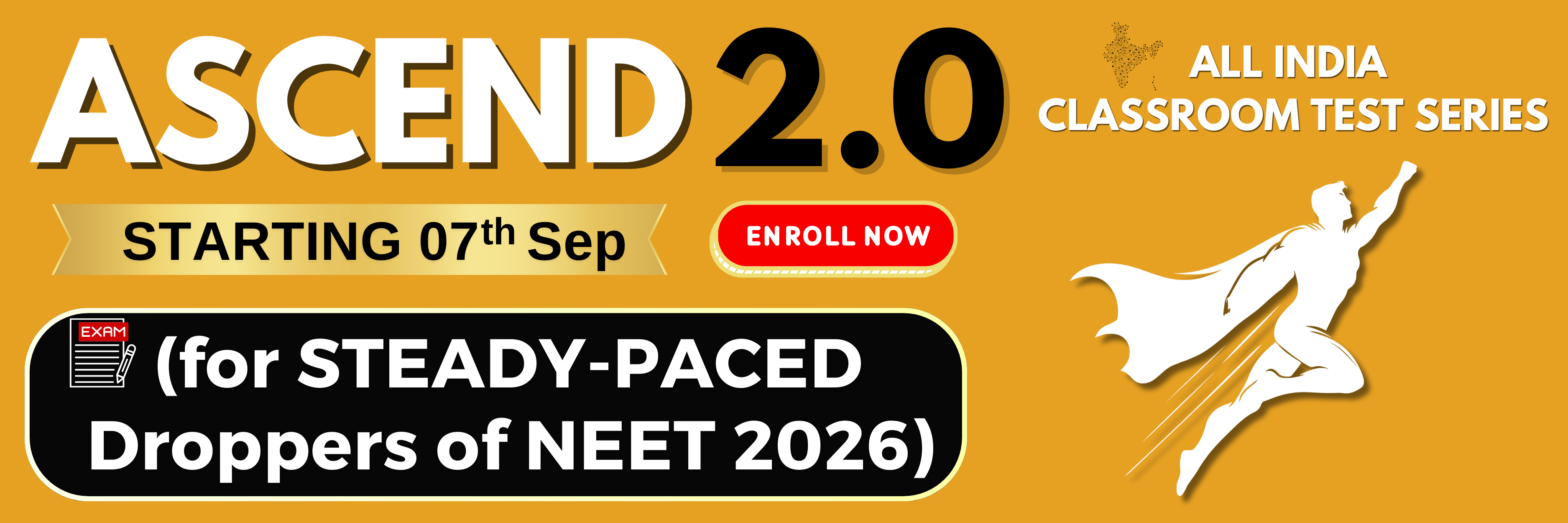When a substrate binds to the active site of the enzyme, the altered structure of the substrate released by enzyme is called
1.
Product
2.
Transition state
3.
Enzyme-substrate complex
4.
Enzyme-product complex
Subtopic: Enzymes |
From NCERT
Please attempt this question first.
Hints
Please attempt this question first.
Abrin and ricin are classified under which category of secondary metabolites?
1. Alkaloids
2. Drugs
3. Pigments
4. Toxins
1. Alkaloids
2. Drugs
3. Pigments
4. Toxins
Subtopic: Primary & Secondary Metabolites |
88%
From NCERT
Please attempt this question first.
Hints
Please attempt this question first.
Most structural proteins are
1. Globular
2. Fibrous
3. Both (1) and (2)
4. Left-handedly coiled
1. Globular
2. Fibrous
3. Both (1) and (2)
4. Left-handedly coiled
Subtopic: Proteins |
Please attempt this question first.
Hints
Match columns I and II.
Choose the correct option.
1. a(i), b(ii), c(iii), d(iv)
2. a(ii), b(iii), c(iv), d(i)
3. a(iii), b(iv), c(i), d(ii)
4. a(iv), b(i), c(ii), d(iii)
| Column I | Column II | |
| a | Trypsin | Hydrolyeses peptide bond |
| b | Cellulose | Unbranched polymer with -1,4 glycosidic linkages |
| c | Collagen | Most abundant protein in the animal world |
| d | Glut-4 | Enables glucose transport into cells |
1. a(i), b(ii), c(iii), d(iv)
2. a(ii), b(iii), c(iv), d(i)
3. a(iii), b(iv), c(i), d(ii)
4. a(iv), b(i), c(ii), d(iii)
Subtopic: Proteins | Carbohydrates: Starch & Glycogen | Carbohydrates: Cellulose, Chitin, Inulin & Agar |
88%
Please attempt this question first.
Hints
Please attempt this question first.
If ‘*' represents a peptide linkage, which of the following options is correct?
1.
2.
3.
4.
1.

2.

3.
4.
Subtopic: Amino Acids |
57%
From NCERT
Please attempt this question first.
Hints
Please attempt this question first.
Glycogen on hydrolysis yields
| 1. | Glucose and maltose | 2. | Glucose and fructose |
| 3. | Lactose and glucose | 4. | Only glucose |
Subtopic: Carbohydrates: Starch & Glycogen |
71%
From NCERT
Please attempt this question first.
Hints
Please attempt this question first.
Choose the correct Statements.
1. i and ii only
2. ii and iii
3. i, ii and iv
4. iii only
| i. | Starch in plants and glycogen in animals are storage molecules |
| ii. | Starch can hold iodine, molecules in its helical loops but cellulose being non-helical cannot hold iodine. |
| iii. | Chitin, a heteropolysaccharide occurring in the exoskeleton of arthropods, consists of N-acetyl glucosamine. |
| iv. | Right end of polysaccharide is called reducing end while left end is called non-acetyl glucosamine. |
1. i and ii only
2. ii and iii
3. i, ii and iv
4. iii only
Subtopic: Carbohydrates |
51%
From NCERT
Please attempt this question first.
Hints
Please attempt this question first.
Which one of the following represents a set of homopolymers?
| 1. | Peptidoglycan, glycogen and starch |
| 2. | Cellulose, insulin and polypeptides |
| 3. | Insulin, chitin and pectin |
| 4. | Starch, cellulose and inulin |
Subtopic: Carbohydrates: Cellulose, Chitin, Inulin & Agar |
72%
From NCERT
Please attempt this question first.
Hints
Please attempt this question first.
Identify the structure given below.

1. Adenylic acid
2. Uracil
3. Nucleoside
4. Adenosine

1. Adenylic acid
2. Uracil
3. Nucleoside
4. Adenosine
Subtopic: Nucleic Acid: Nucleotides |
81%
From NCERT
Please attempt this question first.
Hints
Please attempt this question first.
Identify the given structure:

1. Glycerol
2. Lecithin
3. Lipoprotein
4. Trihydroxypropane

1. Glycerol
2. Lecithin
3. Lipoprotein
4. Trihydroxypropane
Subtopic: Lipids: Glycerolipids, Phospholipids & Glycerol |
83%
From NCERT
Please attempt this question first.
Hints
Please attempt this question first.






